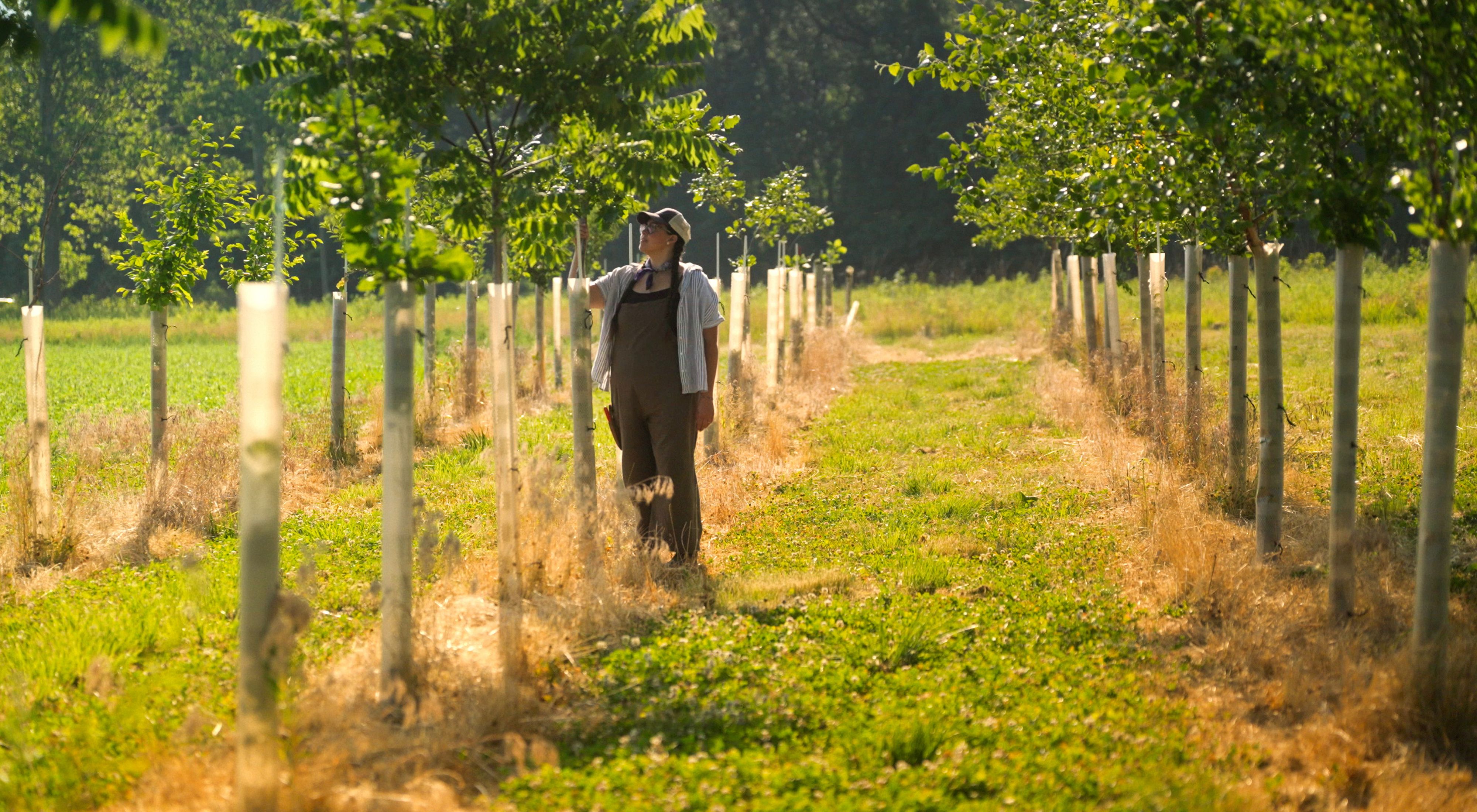Eligible Farmers Invited to Apply to Participate in the Expanding Agroforestry Project
$36 million to be paid in direct incentive payments to participating producers
Media Contacts
-
Christine Griffiths
Phone: 912-222-3297
Email: cgriffiths@tnc.org
Eligible producers in the United States are invited to apply to the Expanding Agroforestry Incentive Payment Program beginning November 15, 2023. Over the course of five years, $36 million will be paid out to producers in direct incentive payments to transform 30,000 acres spanning 30 states into agroforestry systems, thus building a foundation for expanding agroforestry practices nationally.
Those interested in applying or learning more, visit: nature.org/ExpandingAgroforestry.
The Expanding Agroforestry Project is one of 141 projects funded by the United States Department of Agriculture’s Partnership for Climate-Smart Commodities initiative. The Nature Conservancy, the project lead, is working with multiple partners, including six regional leads—Hawai‘i ‘Ulu Cooperative, Propagate, Savanna Institute, Tuskegee University, University of Missouri–The Center for Agroforestry, and Virginia Tech University—to manage the project, including coordinating with national partners to expand financing and develop markets for agroforestry commodities.
“Agroforestry is an underutilized tool in our collective efforts to support rural economies while mitigating climate change,” said Audrey Epp Schmidt, agroforestry program manager for The Nature Conservancy’s North America Regenerative Agriculture program. “Putting more trees on agricultural lands creates more resilient agricultural systems, and expanding the production of commodities grown in agroforestry systems can help drive new market opportunities to build an increasingly climate-smart food system.”
A natural climate solution, agroforestry is used by less than 2% of farm operations in the U.S., yet it can sequester 2 to 4 tons of carbon per acre per year in plant biomass. Adding trees to agricultural landscapes can also increase carbon stored in soils and decrease the use of fertilizers, reducing associated greenhouse gas emissions and impacts on water quality. This project, which includes targeted efforts to increase accessibility and engagement with underserved producers, could eventually spur the adoption of agroforestry practices on tens of millions of acres of U.S. farmlands.
Who Is Eligible to Apply?
Applications for the first enrollment cycle are currently being accepted for producers with crop and grazing operations in the Upper Midwest, Lower Midwest, Hawai‘i, Mid-Atlantic/Central Appalachia and Northeast regions. The Southeast region will open applications in early summer 2024. Deadlines for future enrollment cycles will be announced. For the current application cycle, the deadlines are:
- Upper Midwest: December, 15, 2023
- Lower Midwest: December, 15, 2023
- Hawai‘i: December 31, 2023
- Mid-Atlantic/Central Appalachia: January 1, 2024
- Northeast: January 16, 2024

Each region will have two to three enrollment cycles annually. Typically, applicants will receive a notification about the status of their application within three to four months from the submission deadline for that enrollment cycle.
The project is focused on the use of three agroforestry practices: alley cropping, silvopasture and windbreaks.
Producers selected into the program will be paired with technical assistance providers who will work with them to develop an agroforestry plan for their operation. The incentive payments substantially subsidize the installation costs of new agroforestry plantings, estimated at 75% of installation costs and/or $450 per acre transition incentive.
For more information about the project, visit nature.org/ExpandingAgroforestry.
This material is based upon work supported by the U.S. Department of Agriculture, under agreement number NR233A750004G005. Any opinions, findings, conclusions or recommendations expressed in this publication are those of the author(s) and do not necessarily reflect the views of the U.S. Department of Agriculture. In addition, any reference to specific brands or types of products or services does not constitute or imply an endorsement by the U.S. Department of Agriculture for those products or services.
The Nature Conservancy is a global conservation organization dedicated to conserving the lands and waters on which all life depends. Guided by science, we create innovative, on-the-ground solutions to our world’s toughest challenges so that nature and people can thrive together. We are tackling climate change, conserving lands, waters and oceans at an unprecedented scale, providing food and water sustainably and helping make cities more sustainable. The Nature Conservancy is working to make a lasting difference around the world in 81 countries and territories (40 by direct conservation impact and 41 through partners) through a collaborative approach that engages local communities, governments, the private sector, and other partners. To learn more, visit nature.org or follow @nature_press on X.
